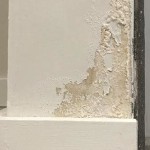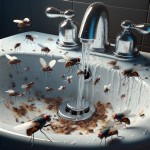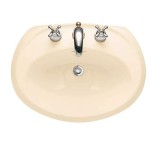What Are The Tiny Black Ants In My Bathroom Ceilings?
Discovering tiny black ants trailing across your bathroom ceiling can be unsettling. While several ant species might venture indoors, some are more attracted to bathroom environments than others. This article explores the common culprits, why they're drawn to bathrooms, and how to address the issue.
Common Bathroom Ant Invaders
Several ant species are commonly found in bathrooms. Odorous house ants (Tapinoma sessile) are a frequent culprit. These small, dark brown or black ants are named for the strong, rotten coconut-like odor they emit when crushed. Another common invader is the pavement ant (Tetramorium caespitum), which is also small and dark brown to black and often nests in cracks in pavement and building foundations. Pharaoh ants (Monomorium pharaonis) are another possibility, though they are light yellow to reddish-brown and tend to prefer warmer, more humid areas within a structure.
Attraction to Moisture
Bathrooms, by nature, are humid environments. Leaking pipes, condensation around windows and shower stalls, and even consistently damp bath mats provide an ideal water source for ants. These tiny insects require water to survive and thrive, making the bathroom a prime target, especially during drier periods.
Food Sources in the Bathroom
While not as abundant as in a kitchen, bathrooms can still offer food sources attractive to ants. Soap residue, toothpaste drips, spilled sugary drinks, and even small amounts of organic debris trapped in drains provide sustenance. Furthermore, the presence of other insects in the bathroom, such as drain flies, can inadvertently provide a food source for ants.
Entry Points and Nesting Sites
Ants can exploit even the smallest cracks and crevices to gain access to your bathroom. Gaps around pipes, cracks in the ceiling or walls, and openings around windows are all potential entry points. They might nest within wall voids, behind tiles, or under flooring, making them difficult to locate.
The Ceiling Conundrum
While ants typically forage on horizontal surfaces, they can and do traverse ceilings. This is especially true if they have established a nest within the wall voids or ceiling structure. Following pheromone trails laid by other ants, they can navigate across the ceiling to reach food and water sources.
Importance of Identification
Correctly identifying the ant species is crucial for effective control. While general pest control methods can be helpful, targeted approaches based on the ant's specific habits and nesting preferences offer a more efficient solution. Consulting a pest control professional can aid in accurate identification and the development of a customized treatment plan.
Prevention and Control Measures
Several steps can be taken to prevent and control ant infestations in your bathroom. Regularly cleaning the bathroom, paying particular attention to removing food and water sources, is paramount. Repairing leaking pipes and ensuring proper ventilation can reduce humidity levels. Sealing cracks and crevices around pipes, windows, and other potential entry points can help prevent ants from gaining access. Using ant baits specifically designed for the identified species can be an effective way to eliminate existing colonies.
Dealing with Existing Infestations
For established infestations, a combination of methods may be necessary. While over-the-counter ant sprays can offer temporary relief, they rarely address the entire colony. Professional pest control services are often the most effective solution for eliminating large or persistent infestations. They can identify nesting sites, utilize targeted treatments, and provide long-term preventative measures.
Monitoring and Maintenance
After implementing control measures, ongoing monitoring is important to prevent re-infestation. Regular cleaning and inspection of the bathroom for signs of ant activity should be maintained. Addressing any potential moisture issues promptly and sealing any new cracks or gaps can further prevent future infestations.

Are Ants Attracted To Your Bathroom Terminix

What Are These Little Black Ants Northwest Exterminating

How To Get Rid Of Sugar Ants John Moore Services

Why Do I Suddenly Have Ants In My House Critters Pest Management Pty Ltd

Weird Debris From Ceiling

How To Stop Ants From Invading Your Bathroom Identification And Prevention Tips Tabor Pest Control

How To Get Rid Of Ants In The Bathroom Synergy²

Dealing With Ants

How Do Ants Make Climbing Walls Look So Easy This Biologist Has The Answer Economic Times

7 Telltale Signs You Have An Ant Problem In Your Home
Related Posts







